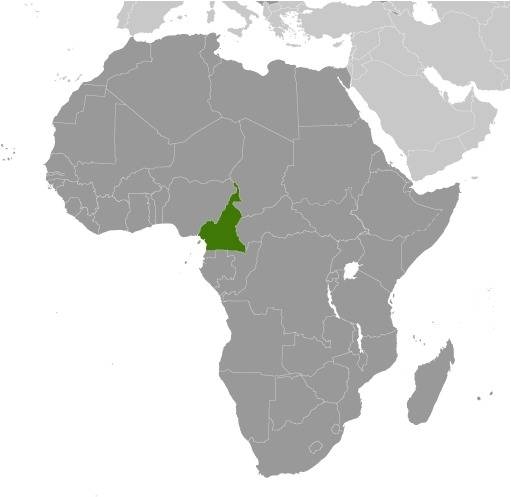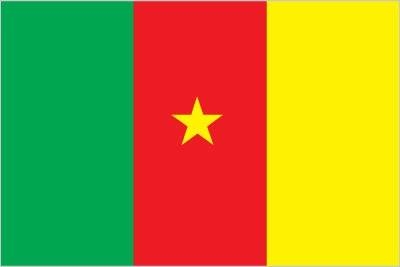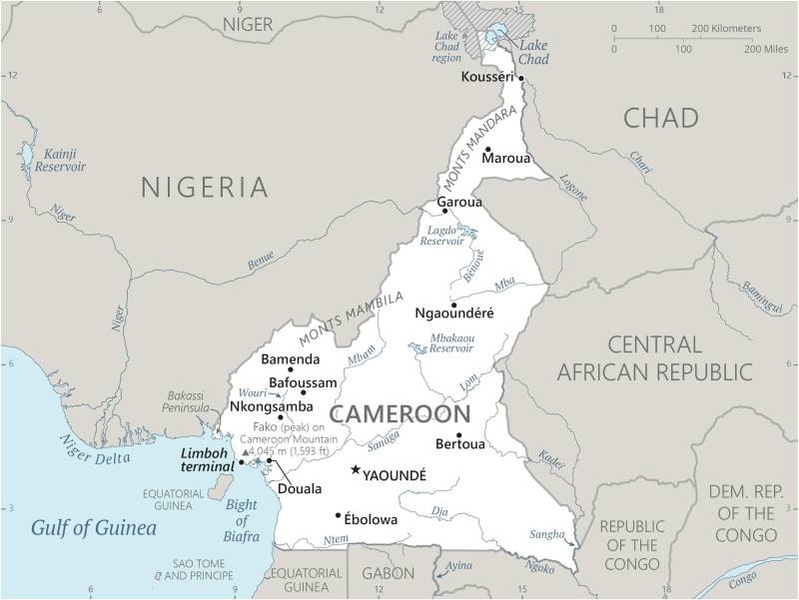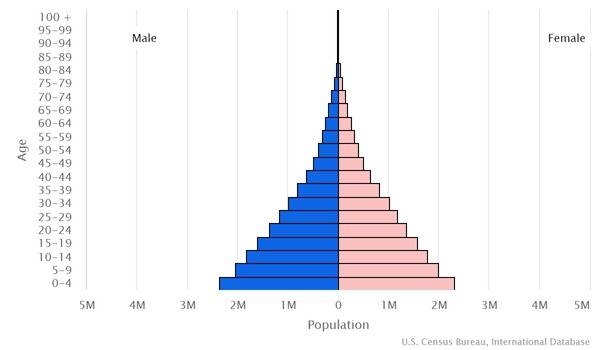Country Summary




Introduction
Background
Cameroon resulted from the merger of former French and British Cameroon in the early 1960s. The country has enjoyed stability, permitting the development of agriculture, roads, railways, and a petroleum industry.
Geography
Area
total: 475,440 sq km
land: 472,710 sq km
water: 2,730 sq km
Climate
varies with terrain, from tropical along coast to semiarid and hot in north
Natural resources
petroleum, bauxite, iron ore, timber, hydropower
People and Society
Population
29,321,637 (2022 est.)
Ethnic groups
Bamileke-Bamu 24.3%, Beti/Bassa, Mbam 21.6%, Biu-Mandara 14.6%, Arab-Choa/Hausa/Kanuri 11%, Adamawa-Ubangi, 9.8%, Grassfields 7.7%, Kako, Meka/Pygmy 3.3%, Cotier/Ngoe/Oroko 2.7%, Southwestern Bantu 0.7%, foreign/other ethnic group 4.5% (2018 est.)
Languages
24 major African language groups, English (official), French (official)
Religions
Roman Catholic 38.3%, Protestant 25.5%, other Christian 6.9%, Muslim 24.4%, animist 2.2%, other 0.5%, none 2.2% (2018 est.)
Population growth rate
2.75% (2022 est.)
Government
Government type
presidential republic
Capital
name: Yaounde
Executive branch
chief of state: President Paul BIYA (since 6 November 1982)
head of government: Prime Minister Joseph Dion NGUTE (since 4 January 2019); Deputy Prime Minister Amadou ALI (since 2014)
Legislative branch
description: bicameral Parliament or Parlement consists of:
Senate or Senat (100 seats; 70 members indirectly elected by regional councils and 30 appointed by the president; members serve 5-year terms)
National Assembly or Assemblee Nationale (180 seats; members directly elected in multi-seat constituencies by simple majority vote to serve 5-year terms)
Economy
Economic overview
largest CEMAC economy with many natural resources; recent political instability and terrorism reducing economic output; systemic corruption; poor property rights enforcement; increasing poverty in northern regions
Real GDP (purchasing power parity)
$94.94 billion (2020 est.)
Real GDP per capita
$3,600 (2020 est.)
Agricultural products
cassava, plantains, maize, oil palm fruit, taro, sugar cane, sorghum, tomatoes, bananas, vegetables
Industries
petroleum production and refining, aluminum production, food processing, light consumer goods, textiles, lumber, ship repair
Exports
$7.73 billion (2019 est.)
Exports - partners
China 17%, Netherlands 14%, Italy 9%, United Arab Emirates 8%, India 7%, United States 6%, Belgium 6%, Spain 5%, France 5% (2019)
Exports - commodities
crude petroleum, cocoa beans, lumber, gold, natural gas, bananas (2019)
Imports
$9.09 billion (2019 est.)
Imports - partners
China 28%, Nigeria 15%, France 9%, Belgium 6% (2019)
Imports - commodities
crude petroleum, scrap vessels, rice, special purpose ships, packaged medicines (2019)
Exchange rates
Cooperation Financiere en Afrique Centrale francs (XAF) per US dollar -
Page last updated: Wednesday, November 16, 2022
